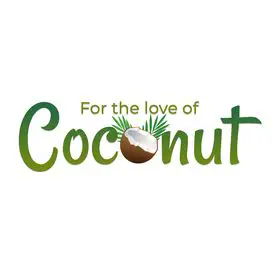
Coconut milk has surged in popularity as a substitute for dairy milk. This is why you are likely to find boxes and cans of this milk wherever you go.However, if you were to take a peek at the ingredient list, you may think twice about buying these milks again. Most of them are loaded up with various additives to make them last longer or taste better.
Naturally, these aren’t the kind of ingredients that you want going into your body. Well, fortunately, there is an alternative – making your own!
Now, while this may sound like a daunting task, it is actually pretty simple to make your own coconut milk. To make sure you get it right each and every time, you are going to need some guidance. So, let’s get started and figure out just what it is that you must know when making coconut milk.
Table of Contents
You may have bought and used coconut milk numerous times already. However, do you really know what it is or how it is actually made? Most people don’t.
So, to get a better idea of just what it is that you are putting inside your body, let’s take a closer look at what coconut milk is:
The first thing you need to understand about coconut milk is that it isn’t naturally made by the coconut. While there is a liquid found inside the nuts, this is known as coconut water – it has a different composition to coconut milk.
Coconut milk is made from the flesh of coconuts. The flesh is scooped out from the nut and then combined with water. For the final product, the flesh is separated from the resulting liquid.

As mentioned, quite a few people have been swapping out dairy milk for coconut milk. Thus, this begs the question:
How healthy is coconut milk?
Here is a breakdown of the nutrient profile of raw coconut milk, much like the one that you will make at home. Each cup of coconut milk contains the following:
•Calories: 552
•Carbohydrates: 1.9 ounces (54.2 grams)
•Protein: 0.47 ounces (13.3 grams)
•Fat:
- Unsaturated Fat: 1.79 ounces (50.7 grams)
- Saturated Fat: 0.10 ounces (3 grams)
As you can see, coconut milk is high in calories as well as unsaturated fats. Now, this alone doesn’t make this milk unhealthy. At the same time, it is best to drink coconut milk in moderation.
Related Reading
Does Coconut Milk Taste Like Coconut? Let’s Find Out!
A Guide To Coconut Cream vs Coconut Milk: What's the Difference?
You may have noticed that coconut milk can be found in a can or a carton. You may have also observed that these two types can be found in different aisles of the grocery.
The boxed version stands with the rest of the other non-dairy milks and the canned form is placed with other cooking ingredients.
So, is there a difference between these two and how does this affect the way that you make your own coconut milk?
Boxed coconut milk is typically meant to be used in a similar manner to dairy milk. As such, you would add this to your coffee, cereal, and similar food items. It has a thinner consistency and may be sweetened as well.
Canned coconut milk, on the other hand, is used for cooking or baking. It has a higher fat content and a thicker consistency to boot.
Now, let’s look at how you would make these variations at home:
Well, it is pretty simple, actually. If you want to use your homemade coconut milk for curries or other dishes, then you would use a more concentrated version.
In case you wish to add it to your beverages, then you would thin out the coconut milk a bit. You may also want to add sugar or some other kind of sweetener.
Related Reading
A Guide to Selecting the Best Coconut Milk for All Your Needs
As mentioned, coconut meat will be your base for your coconut milk. Thus, your first order of business is to select the right kind of flesh to use. Your three main options for coconut meat is fresh, frozen, and dried coconut. Now, let’s talk about the pros and cons of each of these types and which one is best for you:
| PROS | CONS | |
|---|---|---|
| Fresh Coconut | - Coconut meat with high liquid and fat content- Richer and creamier milk | - Not always available - Takes more effort to prepare |
| Frozen Coconut | - High water content similar to fresh coconut - Thick and creamy milk | |
| Dried Coconut | - Easily available- Can be stored for long periods without refrigeration | - The milk is not as thick and creamy as the other two versions |
With fresh coconut, it is up to you to scoop the flesh out of the shell. The upside here is that you get access to coconut meat with a higher liquid and fat content. As such, the milk you get will be richer and creamier. Most importantly, this type of coconut meat is completely unprocessed.
The main issue with fresh coconut is that you need to find whole coconuts. This can be tricky depending on where you live and the time of the year. There is also the fact that this method requires quite a bit of effort. You have to crack open the tough coconut shell and then physically scoop out the flesh.
Frozen coconut is essentially fresh coconut that has been frozen shortly after being separated from the nut. As such, it maintains a rather high water content and is quite similar to the fresh version. In fact, once you have defrosted the frozen coconut, it will behave just as fresh coconut would. Thus, you should be able to get relatively thick and creamy milk.
This is the most readily available form of coconut. It is a dehydrated version and has all the liquid removed. The main advantage of this form is that it can be stored for quite a while, even without refrigeration. Furthermore, it is available all year long.
To rehydrate this form of coconut, it must first be soaked in water. Even then, the milk that is produced may not be as thick and creamy as the other two versions.
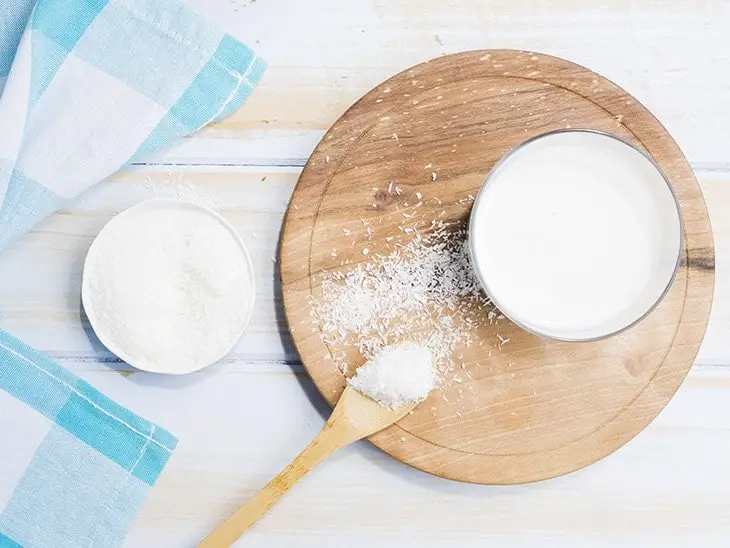
Another point that you should be made aware of is coconut texture. When you want to use coconut flesh, you will have three options - shredded, flaked, and desiccated coconut.
Now, what’s the difference between them and which one should you use to make coconut milk?
Well, shredded coconut and coconut flakes are pretty similar. The only real variation here is that flakes are larger than shredded coconut, which takes the form of thin, small strips.
When making coconut milk, it is best to use shredded coconut. Due to their size and surface area, shredded coconut is able to exude more of the “milk” quickly and more efficiently.
Due to this, shredded coconut produces thicker and creamier coconut milk.
This just leaves desiccated coconut. It is ground up even more finely than shredded coconut. However, it will not work as well for making coconut milk.
To begin with, desiccated coconut is a more dried out version and is often processed quite a bit. Not to mention, it can be artificially sweetened as well.
Shredded
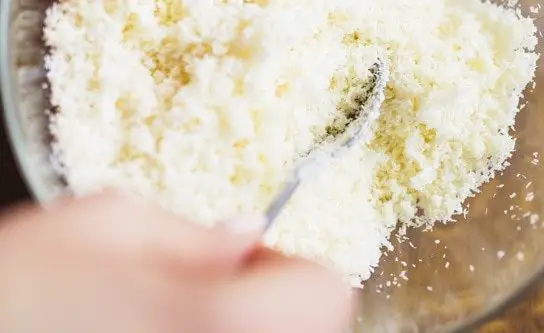
Flaked
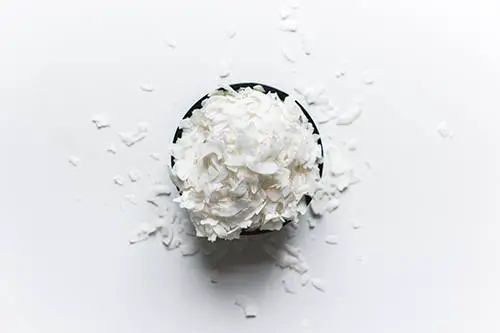
Desiccated
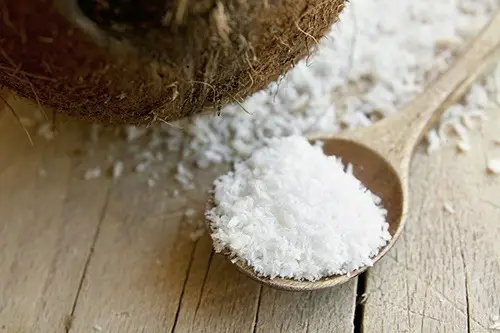
There is no denying that homemade coconut milk is healthier as it doesn’t contain any additives. This does mean, however, that your fresh coconut milk doesn’t have preservatives either. Due to this, it has a much shorter lifespan than other forms of coconut milk.
First and foremost, always keep your coconut milk in the refrigerator. You should also place it in an airtight container so that it doesn’t absorb the smells of other food.
You should be able to store coconut milk in the refrigerator for up to 3 days. Still, you should always double-check the freshness before using it.
If you freeze it, you can keep it for even longer. When frozen, homemade coconut milk may be good for a couple of weeks at a time.
Of course, it should be noted that coconut milk will separate when you freeze it and thaw it again. Thus, this may only be a viable option if you are using coconut milk for cooking or baking purposes.
What's more, once you have defrosted, thawed, or heated a batch of frozen coconut milk, make sure to use it all up. Don’t refreeze that batch again.
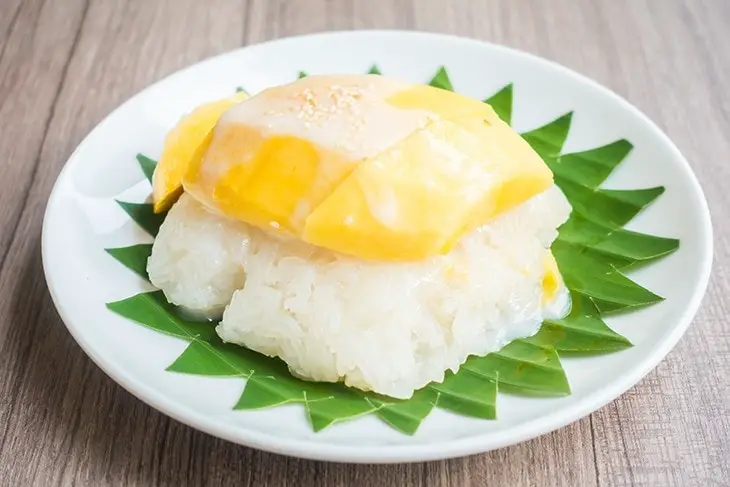
Now, let’s get down to what you really came for – recipes!
Ingredients
•1¾ cups (414 ml) hot water
•2 cups (167 grams) shredded coconut
Method
Step 1: Place the hot water and shredded coconut in a bowl and allow to sit for 1 to 2 hours.
Step 2: Place the mix in a blender and combine until a puree is formed.
Step 3: Strain the liquid into a bowl using several layers of cheesecloth or a nut milk bag.
Step 4: Once all the liquid has been poured out bundle up the cheesecloth and squeeze the extract into the bowl until all of the liquid has been removed.
Step 5: Use the milk or refrigerate it immediately.
Ingredients
•2 cups (167 grams) shredded coconut
•4 cups (946 ml) hot water
•1 tsp. vanilla extract
•Stevia to taste
Method
Step 1: Place all the ingredients in the blender and mix until a puree forms.
Step 2: Strain the mix through several layers of cheesecloth or a nut milk bag.
Step 3: Once all of the liquid has been poured out, gather the material and squeeze out all the remaining liquid.
Step 4: Use immediately or refrigerate.
Ingredients
•3 cups (250 grams) shredded coconut
•4½ cups (1 liter + 100ml) hot water
•Pinch of salt
•¼ cup (177 ml) maple syrup
•2½ tbsp. cocoa powder
•½ tsp. vanilla extract
Method
Step 1: Place the shredded coconut and water in the blender and mix until a puree has formed.
Step 2: Strain the mix through layers of cheesecloth and squeeze the extract to remove the liquid completely.
Step 3: Add the maple syrup, cocoa powder, vanilla extract, and salt to the milk and combine well.
Step 4: Chill immediately and enjoy later.
As you can see, it is a breeze to make your coconut milk! With the right ingredients and a few steps, you will be on your way to whipping up your own delicious batch in no time at all.
Want even more coconut milk-based recipes? Then head to our Pinterest board. We regularly update it with recipes, tips and tricks, and lots more!
